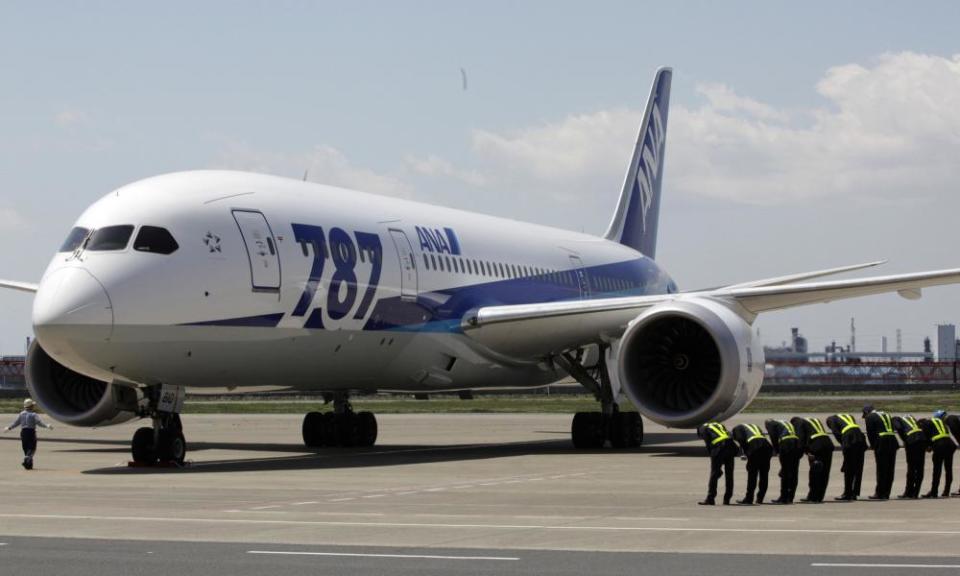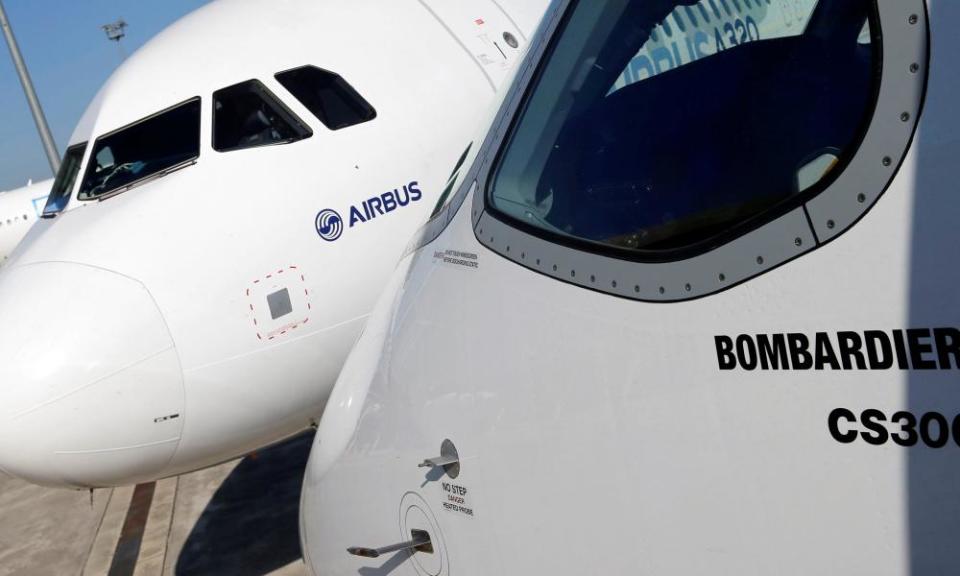Falling orders fail to calm Boeing and Airbus’s transatlantic rivalry

The latest skirmish in the never-ending war between Airbus and Boeing, the duopoly at the heart of the commercial aerospace industry, will be fought at the Farnborough airshow this week.
It has not been a vintage year for either half of this great corporate rivalry as they vied for new aircraft orders without much success. The American producer Boeing has snagged orders for 306 planes so far in 2018, including 193 for its short-haul 737 and 83 for the long-distance 787 Dreamliner.
Airbus, its European arch-competitor, has had a slow start to the year, with net orders for just 206 planes, mostly its popular short-haul A320neo. The sluggish sales rate means their rivalry is unlikely to reach the dizzy heights of 2014, when Airbus soared to 1,753 orders, while Boeing bagged 1,451.
There are buyers out there, though. Boeing hopes to ink deals for cargo freighters at Farnborough and lists 72 orders from “unidentified customers” on its website. It is thought these orders, and more, will be unveiled this week. Airbus has 111 aircraft listed for “unidentified customers”.
Nor is the relatively low number of aircraft orders of great concern, according to Chris Tarry, founder of Ctaira, an aviation consultancy. “It has been a bit slow because we’ve had a lot of orders over the past few years and backlogs remain at record levels,” he said. “People will still be ordering where there are gaps.”
There are plenty of other sub-plots in the rivalry to provide gripping drama at Farnborough. Airbus has suffered the reputational ignominy of an A380 owner preparing to strip the “superjumbo” for parts due to lack of demand, a sad chapter in one of the most ambitious and expensive projects in its history.
Saudi Arabian Airlines is eyeing up to 20 Boeing wide-body aircraft and could announce an order at the show. The carrier is said to prefer Boeing’s 777X ahead of the A380.
Europe’s aerospace champion has also been hamstrung by stuttering engine programmes, with problems at the US company Pratt & Whitney and the Franco-US engine maker CFM International delaying delivery of planes such as its A320neo.
This is a plotline that may spill into Farnborough as sources say the engine makers could receive stinging criticism from senior Airbus executives.
Delays on the A320neo threaten to expose Airbus and its engine suppliers to late penalties from frustrated customers. “The big question is, have Pratt & Whitney and CFM got their engines sorted yet or not? Because at the moment Airbus is producing gliders,” an industry source said. “Airbus could crucify Pratt & Whitney.”

Airbus does at least have something to shout about with an aircraft in the same family, the A321neo LR, which is attracting admiring glances after being upgraded with 500 nautical miles of extra range.
Tarry says Boeing will attempt to distract from this by making much of its planned 797, with around 230 seats and a 5,000-mile range. “Boeing are great at diverting attention from what Airbus is doing but the 797 is still a paper plane,” he said. “Is there are a market there? They claim there is, but it’s a 767 replacement and if I’m an airline that wants to fly 200 passengers 5,000 miles, I’ll either take a 757 or the A321neo LR.”
Donald Trump’s trade dispute with China is also giving Boeing pause for thought. The prospect of high tariffs on US aerospace firms could mean an imminent crimp on sales to a fast-growing market.
Airbus is sure to be targeting China Eastern Airlines, which is thought to have called on jet makers to bid for 150 aircraft, worth around $8bn. Boeing’s best hope is that China Eastern already has 130 of its aircraft, and airlines like owning planes from the same family because it saves on costs such as maintenance and pilot training.
Another interesting development has been the tussle for the regional jet market, where demand over the next two decades is forecast to be high. Airbus recently took ownership of Bombardier’s C-Series jet programme, since rebranded the A220, and secured a $5.4bn order last week from JetBlue for 60.
Boeing has responded by snapping up the A220/C-Series’ main rival, Embraer, in a $4.75bn venture that will give it control of the Brazilian manufacturer’s commercial aircraft and services business.
These two large deals have opened up a new battlefront in a decades-old conflict.

 Yahoo Finance
Yahoo Finance 